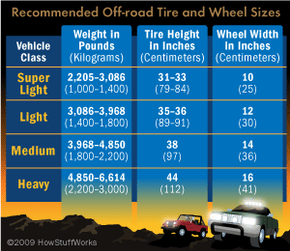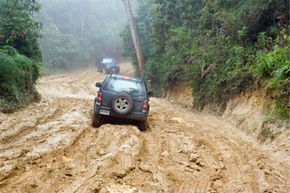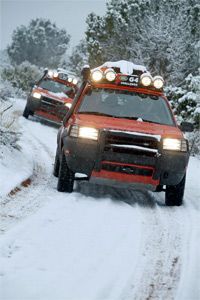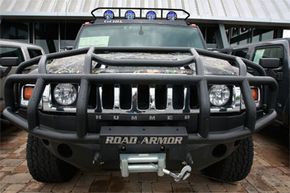In recent years, millions of Americans have purchased four-wheel- and all-wheel-drive vehicles. Many of these folks never change the factory design of their truck or sport utility vehicle (SUV) and never tackle a driving challenge more severe than commuting to work through snow or rain. But a few feel the inexorable pull of nature and the road less traveled. These intrepid explorers spend countless hours and a few extra dollars to modify their factory trucks and SUVs into off-road vehicles capable of chewing up dirt roads, crawling over rocks and climbing near-vertical hills. A few even purchase vehicles -- all-terrain vehicles (ATVs) and utility-type vehicles (UTVs) -- designed exclusively for cross-country adventures.
If you're hearing the call of the wild and feeling the need to explore nature, then you might be ready to become an off-roader. But before you head for the hills, take some time to understand what off-roading is all about and what it takes to transform a factory vehicle into an off-road vehicle. Going unprepared into the wilderness can have serious consequences. You can get stranded. You can get lost. And, in a worst-case scenario, you can get hurt. In fact, the U.S. Consumer Product Safety Commission voted in October 2009 to write mandatory rules to regulate UTVs, following 116 deaths and 150 injuries since 2003. Many of these accidents were caused by vehicle rollovers, which occurred because drivers failed to follow the manufacturer's safety instructions [source: CBS/AP].
Advertisement
So, take it slow and easy. Understand how the various systems of your vehicle work. Then understand how to modify those systems to ensure that your vehicle functions effectively and safely in off-road situations. This article will provide a good first step. In it, we're going to cover everything you need to know about off-road vehicles, from the ground up. And speaking of the ground, let's start with off-road tires, which increase your vehicle's clearance and give it traction in dirt, mud, snow and sand.






